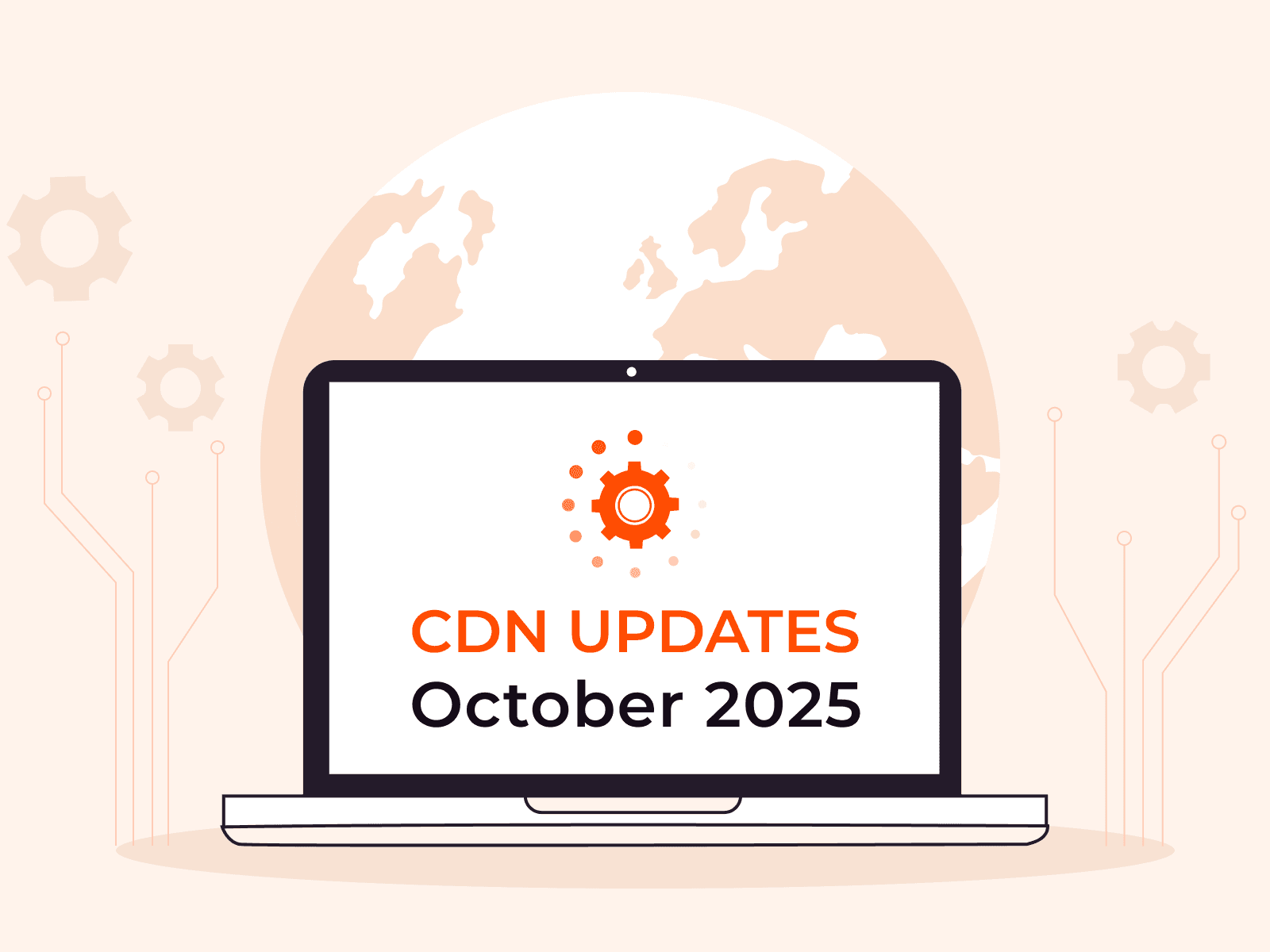CDN Evolution: From Static Content to Edge Computing
- May 9, 2024
- 4 min read

A content delivery network (CDN) is a globally distributed network of servers designed to optimize the delivery of web content to users. By caching content closer to the user, CDNs improve the speed and reliability of web services. This article traces the evolution of CDN technology from its origins in static content delivery to the sophisticated edge networks of today, exploring how CDN providers have innovated in response to the changing landscape of online content delivery.
First Gen: Static Content Delivery and the Dawn of CDNs
Back in the internet’s earliest days, during the 1980s, the web was a collection of text-only static HTML pages. As the internet population grew, so did the complexity of websites, which started to include images, CSS, and JavaScript. This led to the era of the “World Wide Wait” in the 1990s, a reference to frustratingly slow page load times.
To combat this, content delivery networks emerged in the mid-to-late 1990s, focusing on caching static content such as images, videos, and HTML files on distributed servers. By caching content closer to users, first-generation CDNs minimized round-trip time (latency), improved load times, alleviated congestion on origin servers, and improved user experience. This made the web more accessible and efficient, kicking off CDN technology.
Second Gen: Evolving to Dynamic Content
With the turn of the millennium, the internet landscape witnessed a surge in demand for more dynamic and interactive content as more people migrated from the slower dial-up connections of the 1990s to faster broadband connections, facilitating audio and video streaming.
Streaming became a key factor in CDN development due to the rise of on-demand and live video streaming gained traction in the mid-2000s: Players such as YouTube, Netflix, Hulu, and Amazon Prime Video entered the scene. The iPhone also debuted, followed closely by Android competitors, increasing mobile internet access and the number of people using streaming services online.
In addition, the era of collaborative internet, often termed Web 2.0, generated a new paradigm whereby end users started communicating with an application in both directions:
- Ingesting content
- Generating content, for example, on social media by posting, commenting, and liking
This created a surge in demand for dynamic content generated according to unique user requests and preferences. Second-generation CDNs responded to this demand by expanding capabilities to support dynamic content delivery, including database-driven websites, personalized content, social media, and streaming services.
Third Gen: Prioritizing Security with the Rise of Cyber Threats
By 2015, around 3 billion of us were online—a 50% growth in just five years. Such an intensive increase in the number of web users inevitably created a breeding ground for new attack vectors and cybersecurity challenges. In addition, the e-commerce market grew exponentially in the late 2010s, with the industry relying heavily on online payments and user credential processing, bringing another layer of cyberthreats. CDNs once again had to adapt and develop new capabilities to mitigate evolving security risks effectively.
Third-generation CDNs offered integrated, advanced security measures like SSL/TLS encryption, web application firewalls (WAF), and DDoS protection to address increasing concerns over data breaches and cyberattacks. As reverse proxies, CDNs are able to securely deliver content while mitigating security threats before they ever reach a customer’s infrastructure.
Fourth Gen: The Era of Edge Networks
The evolution of CDN technology has led to the development of edge networks, constituting the fourth generation of CDNs, from around 2020. This generation represents a significant advancement including enhanced security and data privacy, rich media streaming, and content optimization.
Edge networks leverage edge computing, bringing processing power closer to the network edge. Their highly distributed infrastructure, deployed in diverse geographic locations, significantly reduces latency, enables faster response times, and enhances user experience for dynamic and interactive applications.
Fourth-generation CDNs offer a range of benefits to support new directions in content delivery:
- Serverless architectures enable developers to deploy and run code without managing servers, facilitating scalable and cost-effective application deployment.
- AI integration optimizes content delivery, predicts user behavior, and mitigates security risks in real time. The result? Efficient resource allocation and proactive threat detection.
Comparing CDN Generations
The following table compares the different generations of CDNs, highlighting their key features and advancements. It’s important to note that these generations and their offerings overlapped since CDN development is a gradual process.
| Feature | First-Generation CDN Static content | Second-Generation CDN Dynamic content | Third-Generation CDN Security | Fourth-Generation CDN Edge network |
| Starting | Late 1990s | Early 2000s | Early/mid 2010s | Early 2020s |
| Traffic pricing | High | Moderate | Low | Very low |
| Static content delivery | Yes | Yes | Yes | Yes |
| Dynamic content delivery | No | Yes | Yes | Yes |
| On-demand video streaming | No | Yes | Yes | Yes |
| Live video streaming | No | Yes | Yes | Yes |
| L2 caching (origin shielding) | No | Yes | Yes | Yes |
| Basic content optimization (file compression) | No | Yes | Yes | Yes |
| Basic network security (L3, L4 DDoS protection) | No | Yes | Yes | Yes |
| API acceleration | No | No | Yes | Yes |
| Advanced content optimization (image transformation) | No | No | Yes | Yes |
| Advanced network security (L7 DDoS protection) | No | No | Yes | Yes |
| Content security (TLS encryption, WAF) | No | No | Yes | Yes |
| Traffic optimization: Smart routing | No | No | No | Yes |
| Edge computing (functions at the edge) | No | No | No | Yes |
| Edge computing (AI inference at the edge) | No | No | No | Yes |
| Smart cost management | No | No | No | Yes |
Gcore CDN: Providing Next-Gen CDN Solutions
With 160+ PoPs across six continents and a network capacity exceeding 110 Tbps, Gcore Edge Network offers blazing-fast performance with an average global latency of 30 ms. Gcore Edge Network includes a robust CDN that enhances static content and dynamic content delivery and powerful image optimization designed for web optimization tasks. Gcore CDN offers built-in web security, including L3/L4/L7 DDoS protection. We continue to innovate, ensuring our services are at the forefront of the industry—including a recent acquisition that bolsters our powerful WAAP solution.
We recently launched FastEdge, a new WebAssembly-based serverless edge computing product that runs on our CDN. FastEdge can handle even the most sophisticated workloads, whatever the industry or application.
Conclusion
CDNs have evolved from static content delivery to sophisticated edge networks over the years, transforming the way content is consumed. The current generation of CDNs offers not only traditional features like static and dynamic content delivery and video streaming but also incorporates edge computing for personalized web experiences and emerging workloads like AI inference.
Whatever your industry—media and entertainment, gaming, e-commerce, financial services, technology, or telecommunications—your customers deserve fast, secure, and reliable performance powered by a robust edge network. Gcore offers world-class CDN and edge network solutions to meet your static and dynamic content delivery needs at any scale.
Related articles
Subscribe to our newsletter
Get the latest industry trends, exclusive insights, and Gcore updates delivered straight to your inbox.






